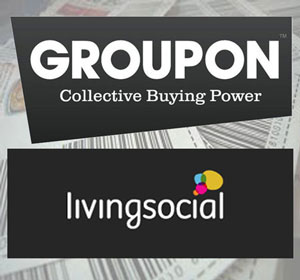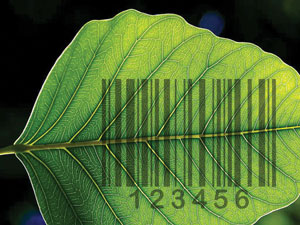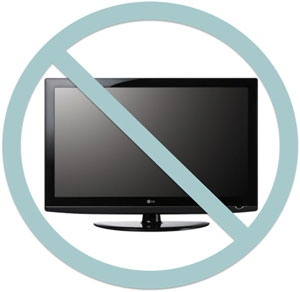Get your Groupon - who are you LivingSocial with?
 Daily deal sites in the U.S. have changed the business landscape, shifting how consumers search for bargains and connect with businesses large and small, national and local. New York researcher The Nielsen Company looked at the audiences of two major players - Groupon and LivingSocial - to see what online couponers really want.
Daily deal sites in the U.S. have changed the business landscape, shifting how consumers search for bargains and connect with businesses large and small, national and local. New York researcher The Nielsen Company looked at the audiences of two major players - Groupon and LivingSocial - to see what online couponers really want.
Visitors to Groupon and LivingSocial are similar in that nearly two-thirds are female and more likely than the average U.S. Internet user to be affluent. LivingSocial’s visitors trend slightly more affluent and more educated than Groupon’s, with 46 percent having a bachelor’s or post-graduate degree, compared to 39 percent for Groupon (the national average for Internet users is 25 percent). Visitors to LivingSocial are also 49 percent more likely than the average American online to earn $150,000+, while Groupon’s visitors are 30 percent more likely.
Groupon has a higher concentration of visitors ages 35-64 (57 percent compared to 51 percent for LivingSocial), with the Internet average being 48 percent. LivingSocial has a higher concentration of younger visitors, with 21-to-34-year-olds making up 33 percent of their audience compared to 25 percent for Groupon and 21 percent across the Web.
While both sites offer deals in many cities across the country, Groupon is most likely to have visitors from the Northeast while LivingSocial has a high concentration of visitors in the South and Pacific regions.
Among adults online who visit coupon/rewards Web sites, nearly half are interested in gardening, while roughly one-third are interested in home repair/renovation, religious involvement and landscaping. Other standouts include knitting/sewing (coupon/rewards site visitors are 19 percent more likely than the average adult Internet user to be interested) and gourmet cooking (18 percent more likely).
Shop smarter: Barcode scanning helps novice gardeners make the right landscaping choices
 It’s grow time. Summertime always brings out the master gardeners and green-thumbs but for the average home improvement-store shopper, the simpler the better. Instead of waiting around for a Home Depot or Lowe’s nursery employee to help suss out the hardy - and hardest-to-kill - shrubs and flowers, what if your smartphone could do it for you? Big-box home improvement stores are introducing some help to provide customers with immediate information for their buying decisions, according to Elizabeth Olson’s May 6 article, “The Bar Code That Tells You How Much Water, Light and Fertilizer,” in The New York Times. These stores are adding barcodes to certain products that give potential buyers on-the-spot access to product reviews and ratings, how-to guides and videos.
It’s grow time. Summertime always brings out the master gardeners and green-thumbs but for the average home improvement-store shopper, the simpler the better. Instead of waiting around for a Home Depot or Lowe’s nursery employee to help suss out the hardy - and hardest-to-kill - shrubs and flowers, what if your smartphone could do it for you? Big-box home improvement stores are introducing some help to provide customers with immediate information for their buying decisions, according to Elizabeth Olson’s May 6 article, “The Bar Code That Tells You How Much Water, Light and Fertilizer,” in The New York Times. These stores are adding barcodes to certain products that give potential buyers on-the-spot access to product reviews and ratings, how-to guides and videos.
Garden plants sold at Home Depot and Lowe’s have barcodes on each plant tag designed to allow customers with smartphone scanners to check out whether the plant, for example, grows in low light or needs frequent watering. The information goes beyond the brief instructions for care on the little white tag and can help consumers find the perfect plants for their climate and how to care for them - saving time and money by skipping the trial-and-error. Depending on how Home Depot and Lowe’s patrons respond to the technology, it could be expanded for use in other departments so consumers can see just how simple assembly and installation is on a new set of shelves.
 Viewers cutting the cord but not the connection
Viewers cutting the cord but not the connection
Since the mid-20th century TV has served as a source of information, entertainment and companionship for Americans. The way viewers through the decades have connected emotionally to TV programming raises the question of how, in this online age, the Web is different as a medium for those emotional connections. It seems that as the mode of viewership has indeed shifted, the emphasis on quality programming has only increased, according to The Paley Center for Media’s J. Max Robbins’ April 29 article, titled “The Truth About The So-Called Cord Cutting Phenomenon,” summarizing a discussion with some of the country’s elite digerati.
Robbins reports that the essential take-away from the discussion was that the more social media is integrated into our lives, the more vested we are in the programming and the more we demand in terms of quality narrative.
How we watch that quality programming is key. Many are choosing to cut the cord, so to speak, and receive their programming via online and mobile mediums. Netflix announced quarterly earnings that revealed the service had 23.8 million subscribers domestically, which is equal to Comcast, and that it was sending out more programming via the Web than mail.
Digital access to on-demand programming has only fed the hunger for - and the emotional connection to - quality programming. Robbins believes that digital connection has raised the stakes for incumbent networks, as well as startups like Netflix, to make good shows and to make them easy for us to watch when and where we want.
